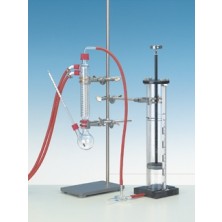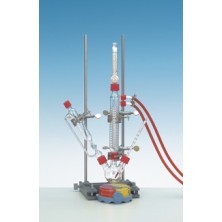
Haloalkanes: Wurtz reaction – lithium organyls
Item no.: P3101100 Principle Unlike the other alkali-organyls, lithium organyls – with the exception of methyllithium – show a stronger covalent behaviour. They dissolve rather well in organic solvents, such as diethyl ether, tetrahydrofuran, and alkanes, and they are relatively stable in these solvents. Wurtz synthesis was developed in 1854 for the preparation of higher

